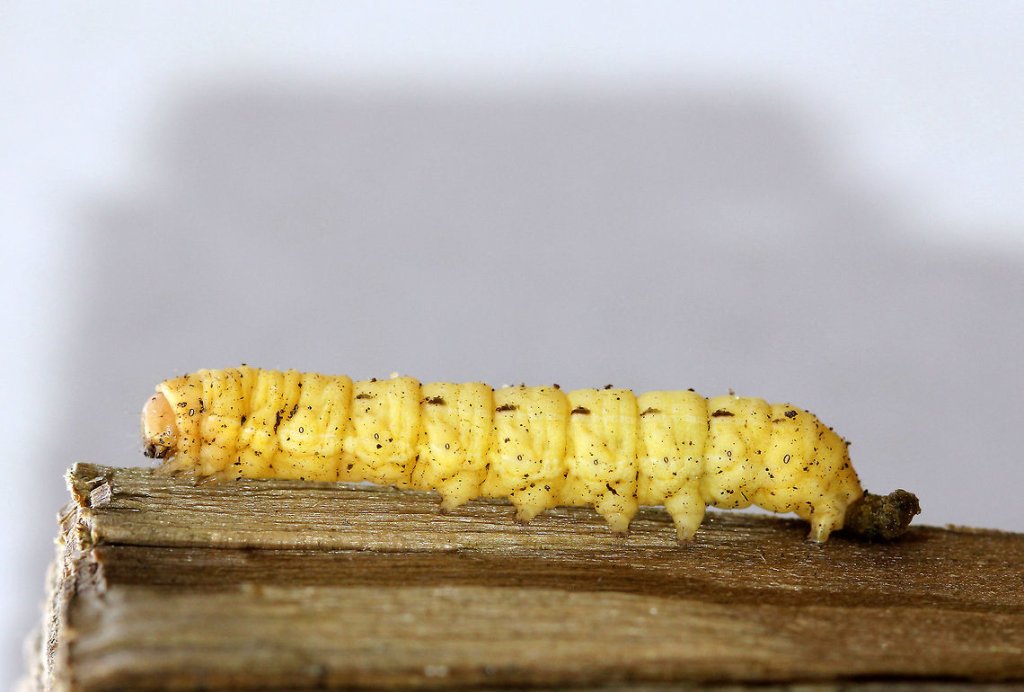Ever wondered why your garden is aflutter with little yellow guests? You’re not alone!
Yellow caterpillars are a fascinating bunch, often heralding from moths or butterflies you’d love to identify.
These tiny critters play a significant role in the ecosystem and can be both a delight and a dilemma for gardeners and nature enthusiasts alike.
Their vibrant color and intriguing patterns can be a visual treat, but telling them apart can be as tricky as finding a needle in a haystack for the untrained eye.
Yes, there are indeed many different types of yellow caterpillars, each with unique markings and characteristics that make them stand out from their leafy meals
We’ve compiled a guide showcasing 25 yellow caterpillars, complete with stunning pictures and tips for identification.
List of Common Yellow Caterpillars
Since we are particularly talking about the yellow-colored little creatures, let us see some common yellow caterpillars that you may come across while roaming in your garden:
1. The Yellow Woolly Bear
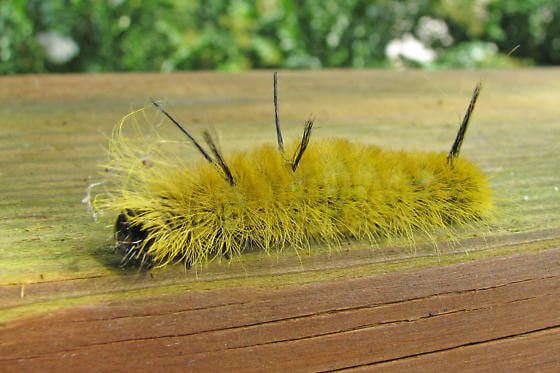
Out of all North American caterpillars, the yellow woolly bear caterpillars are the most common ones. They are fluffy-looking with long and thin hair. The fuzzy hair color can range from white to yellow to reddish-brown.
These caterpillars can be identified through their short bristles and extra-long hairs. The woolly bear fuzzy caterpillar is not poisonous but can cause skin irritation. These caterpillars love carrots, eggplant, and sweet potato leaves, so they will be seen munching on these plants. Always make sure you wear protective gloves if you are trying to get rid of these. After going through a metamorphosis, these caterpillars turn into stunning Virginia tiger moths.
Identification: Fluffy with long thin hair, color varies from white to reddish-brown.
2. Buff-Tip Moth Caterpillar
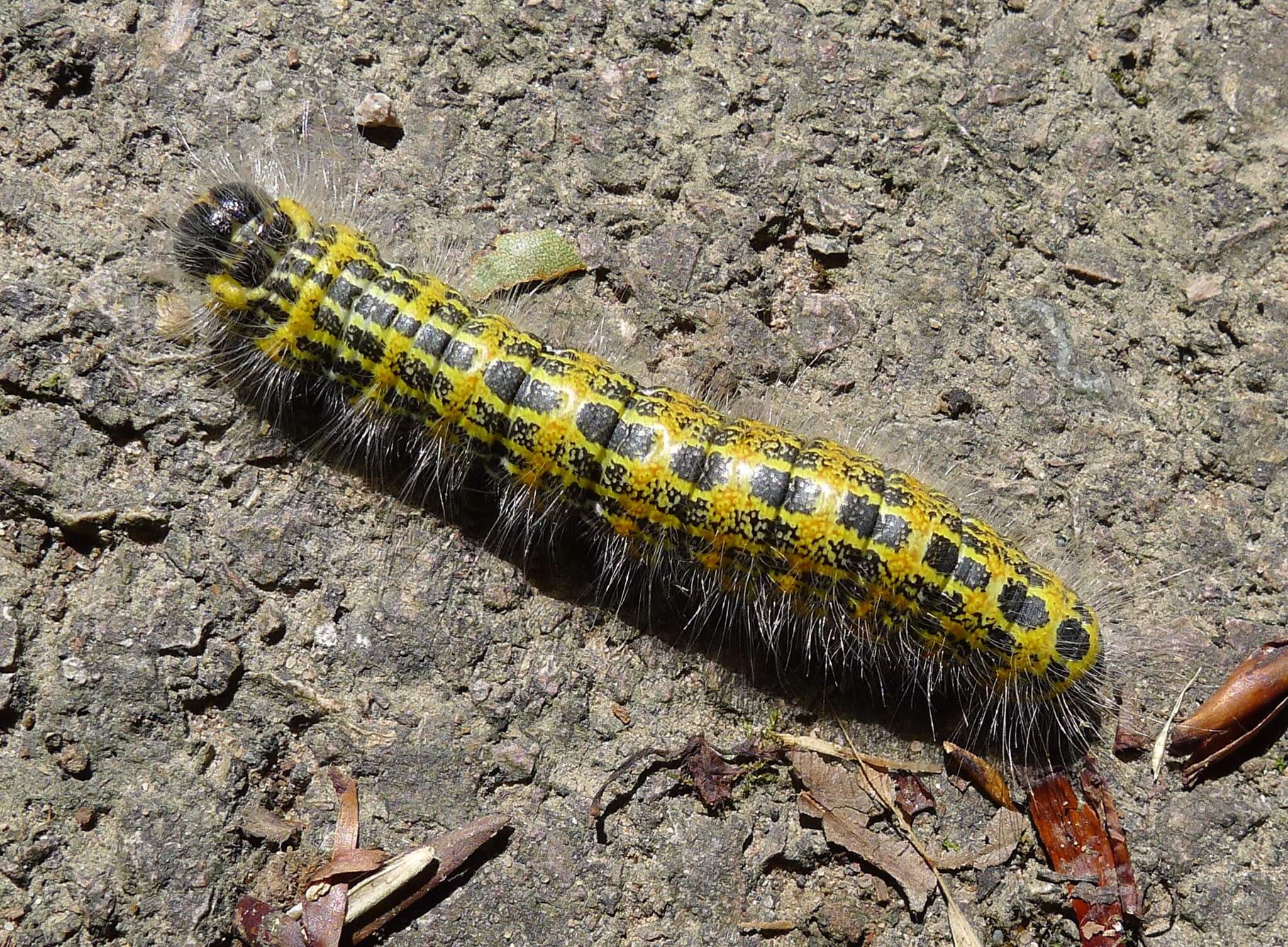
This black, yellow caterpillar feeds on oak leaves. They can grow up to 70mm long, and have long hairs that can cause irritation to human skin. This fuzzy yellow caterpillar hatches from the egg cluster and become full grown in 30 days. They are often seen between July and October.
Identification: Black and yellow, feeds on oak, long hairs causing irritation.
3. Sycamore Tussock Caterpillar
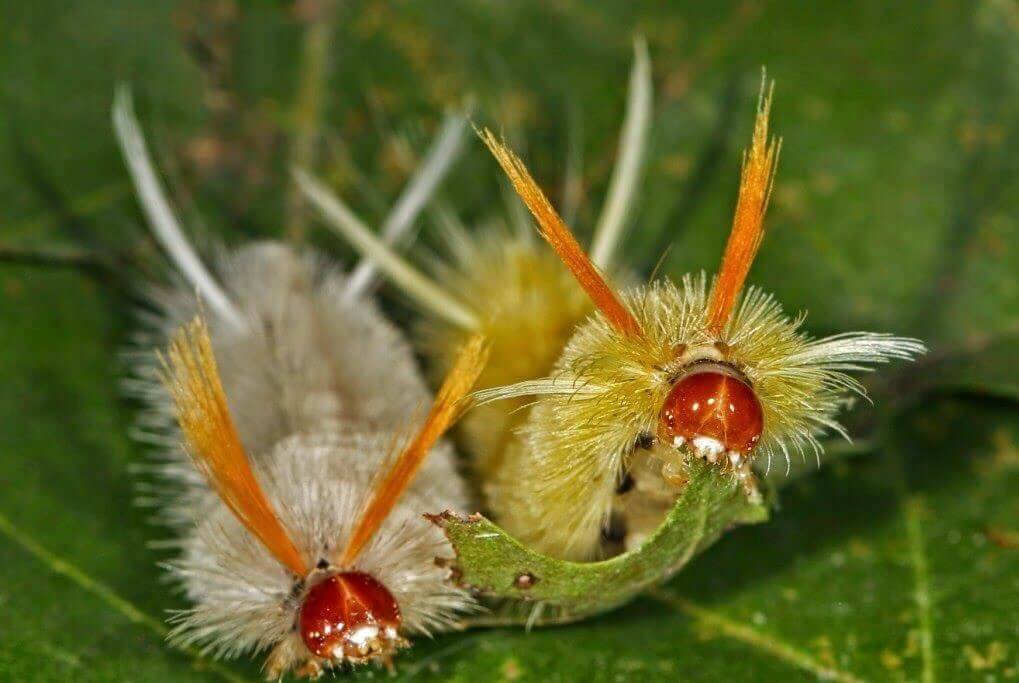
Sycamore Tussock Caterpillar is often wandering around looking for a safe spot to make a cocoon in most parts of the United States. These caterpillars do not sting, but the hairs may cause irritation to the skin.
After hibernation, this caterpillar becomes a beautiful pale-brown tiger moth. These caterpillars occasionally drop from the leaves and feed on walkers. These are seen in the months of July and September.
Identification: Wandering, non-stinging, hair may irritate skin.
4. Cinnabar Moth Caterpillar
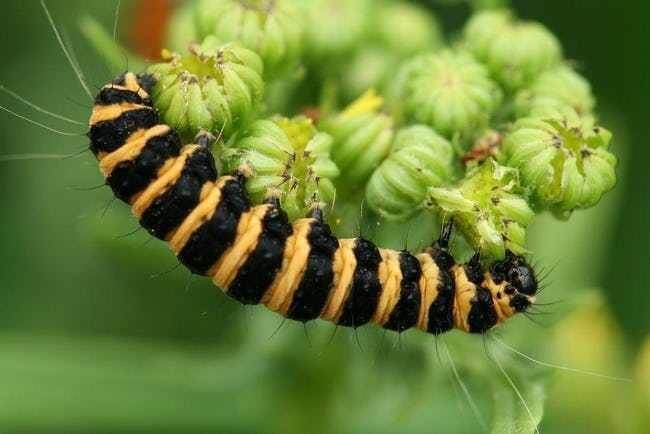
Growing up to 28mm long, the cinnabar moth caterpillar looks as if it is wearing an ugly black-yellow striped shirt. The caterpillar is vibrant and hard to miss. The stripes are there for a reason; stripes in any insect warn the predators of a creature’s unpleasant taste. You will find this caterpillar in the months of July to September. They are usually seen in open grasslands and heathland.
Identification: Black-yellow striped, found in open grasslands and heathland.
5. Monarch Butterfly Caterpillar
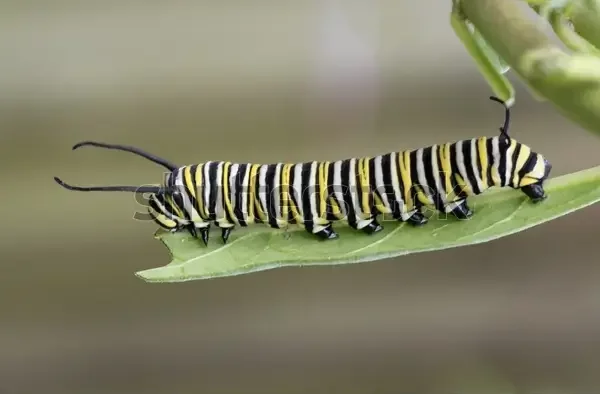
As spring approaches, female monarchs begin laying their eggs, especially on milkweed. These caterpillars have yellow-black stripes and are said to engulf toxins that may harm predators. After caterpillars grow up, they attach themselves to a leaf or a stem and transform into an amazing butterfly. They are found in the USA, Australia, India and Europe. Monarch caterpillars are known to chew milkweeds.
They do it not just to feed themselves but also for protection; the milky sap from the leaves stays with them even after metamorphosis and makes the adult butterfly taste awful to the predators. Since these caterpillars only eat milkweed, they are not a threat to the garden. In fact, gardeners all over the world always try to attract them. Farms that allow milkweed to grow around the fences are a good breeding spot for these caterpillars.
Identification: Yellow-black stripes, feeds on milkweed.
6. Southern Flannel Moth Caterpillars
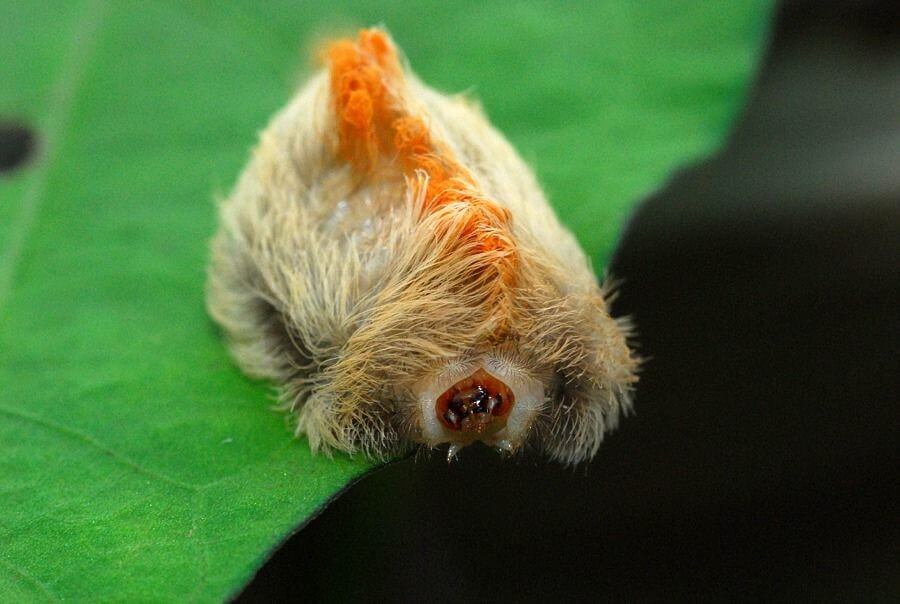
This yellow fuzzy caterpillar is very attractive and unique. It looks just like a fluffy ball with soft hair all over its body. You will be tempted to touch it, but please don’t. The puss caterpillar is one of the most poisonous caterpillars out there. Under that soft fur, there are toxic spines that stick to the skin. The pain after touching this yellow fuzzy caterpillar can be more than the pain after a bee sting.
You may experience several symptoms, like headache, fever, nausea, and respiratory diseases. The sting becomes even worse as the caterpillar grows. These caterpillars eventually turn into furry yellow-orange moths. The caterpillar looks very ‘cute’, and thus, it attracts children. They always want to pick it up. The spines underneath the yellow fuzzy caterpillar sting very hard. The venom can cause throbbing pain and red spots. Most species are found around shade trees, ornamental shrubs, fruit trees, etc.
Identification: Yellow, fluffy, poisonous spines underneath.
7. American Dagger Moth Caterpillar
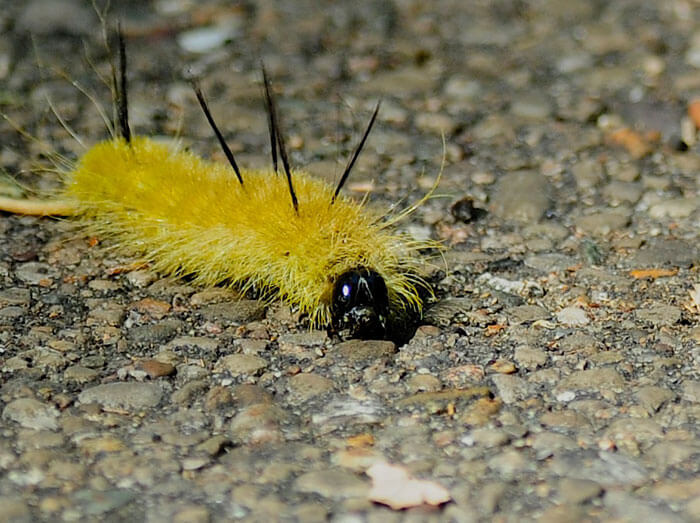
Another yellow fuzzy caterpillar, the dagger moth caterpillar, has irritating fur around it that spins around the cocoon. The black hair antenna makes the caterpillar look scarier than it actually is. They are commonly found in late summer and early fall. It feeds on trees like oak, ash, birch, elm, and maple. It causes no damage to the plants. It eventually turns into a beautiful gray moth.
Identification: Yellow, fuzzy, irritating fur, feeds on various trees.
8. Spicebush Swallowtail Caterpillar
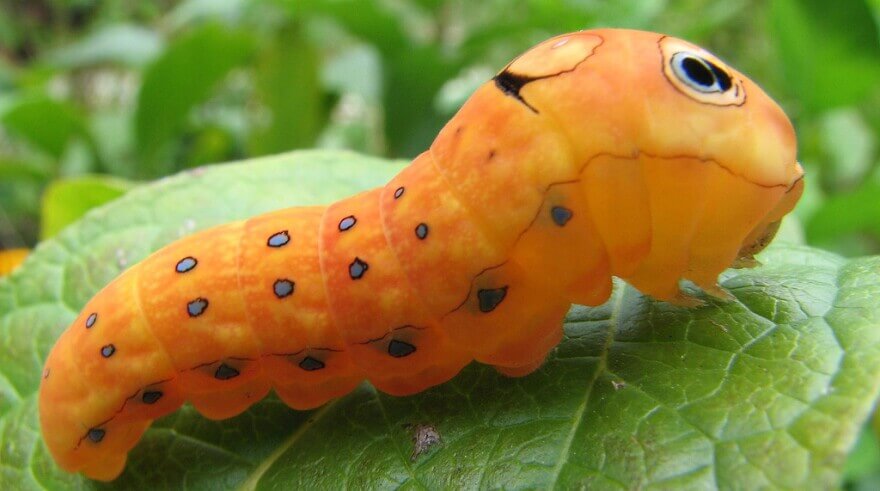
One of the most unique features of the spice brush swallowtail caterpillar is its eyes as they look exactly like a snake. It also has another feature called ‘osmeteria,’ which is a red and forked organ located behind the head. The osmeteria looks like a snake’s forked tongue and smells terrible. The caterpillar can be found commonly everywhere except in northern states. It turns into a beautiful spicebush swallowtail butterfly.
Identification: Snake-like eyes, osmeteria behind head.
9. The Magpie Moth Caterpillar
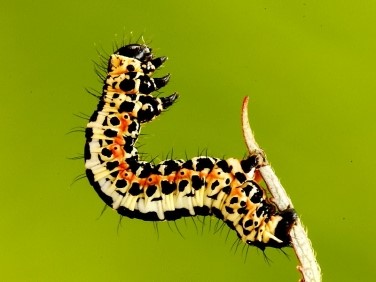
This species of moth is a favorite among collectors who breed it to obtain unusual and colorful patterns. You will find them in parks and gardens. The color and pattern of the magpie moth are similar – black and yellow spots. The caterpillar is common as a garden pest.
Identification: Black and yellow spots, common garden pest.
10. The Large White Caterpillar
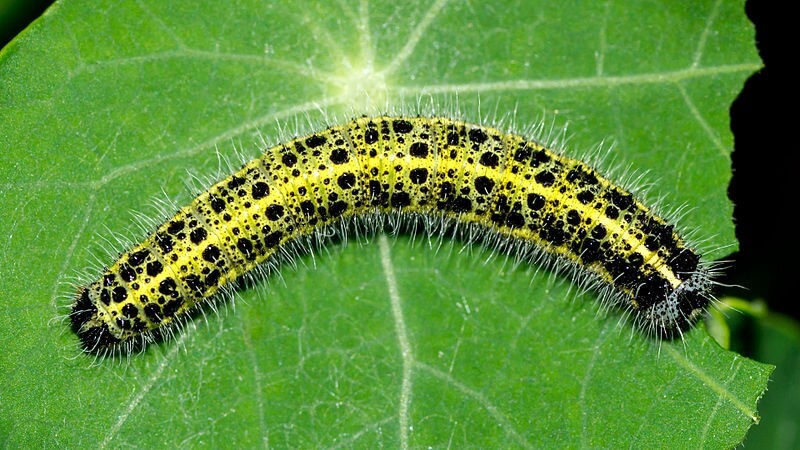
This fuzzy pale yellow-green caterpillar turns into a large white butterfly, hence the name. It has striking black spots and visible hairs on the body that offer a bold appearance, a warning to the predators. The body of the caterpillar is poisonous due to the mustard gas its body accumulates. Due to its love for cabbage, it is also called the ‘cabbage’ white caterpillar. It is famously known for chopping off cabbages, leaving barely anything behind. They can be found across the United Kingdom between March and October.
Identification: Fuzzy pale yellow-green, black spots, poisonous.
11. Saltmarsh Caterpillar
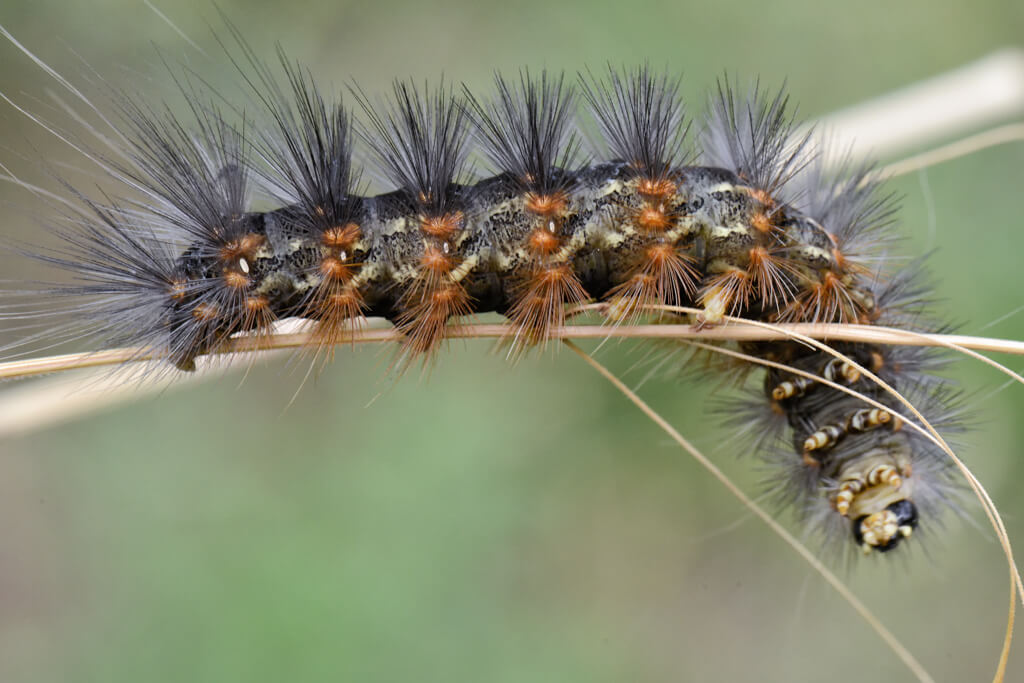
They are 5.5 cm long and can be found feeding on various vegetables like beans, cabbage, corn, tomato, cotton, and soybean. They are found in the USA, especially in regions around Central America and Canada.
They have dark, rusty coloration with medium bristles and tiny black spots. This caterpillar looks a lot like the yellow, fuzzy, woolly bear caterpillar, the only difference being black spots all over its body. The fur of these caterpillars causes skin irritation which will lead to a rash. They spin an orange cocoon and turn into a really beautiful, pale orange butterfly.
Identification: Dark, rusty coloration, feeds on various vegetables.
12. Saddleback Caterpillar
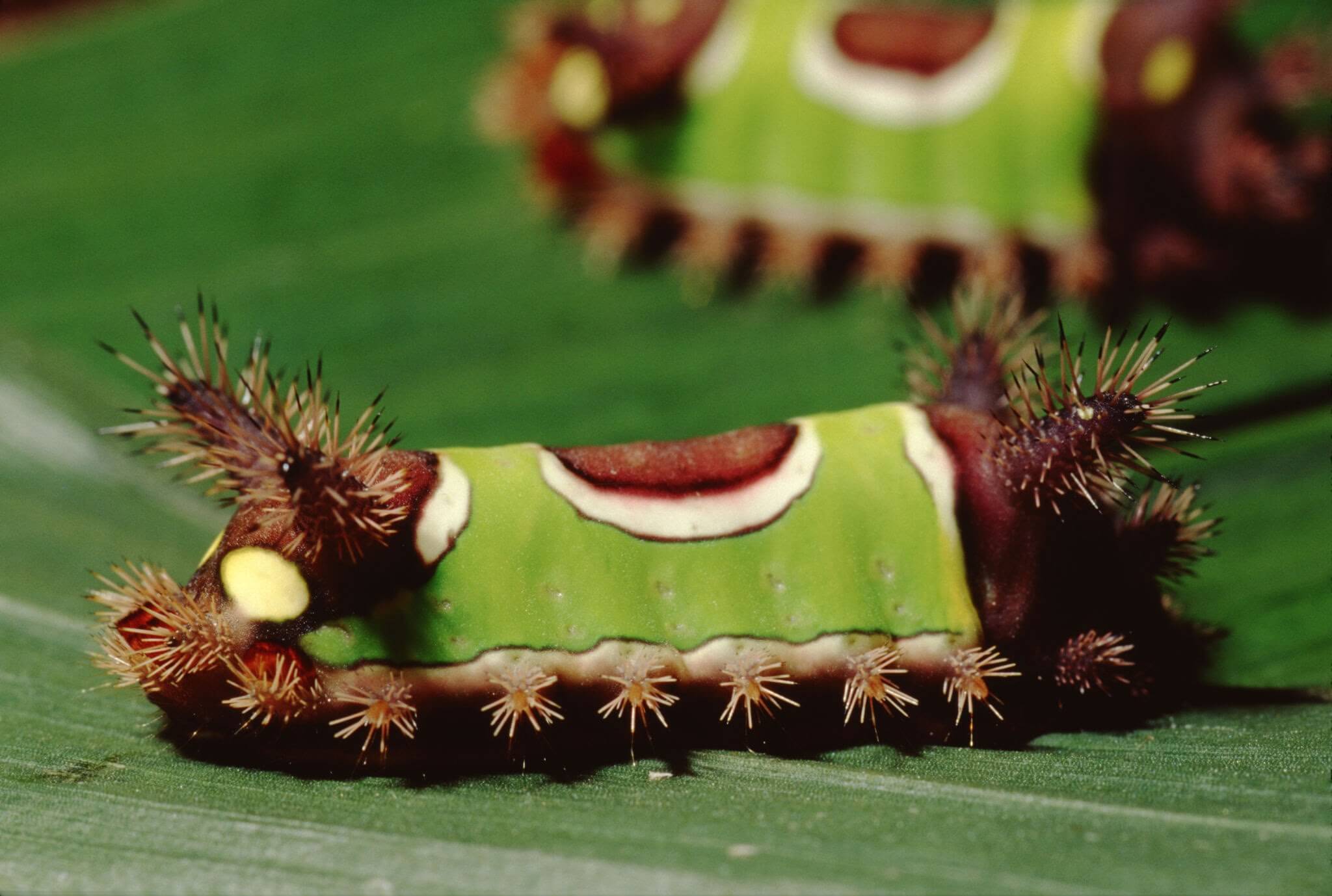
Native to the United States, the beautiful saddleback caterpillar can be identified by its saddle-shaped spot on the back. It is also called a slug caterpillar because of its short length and abdominal legs. You need to make sure you don’t touch the attractive pompoms on their heads. Their hair secretes venom. The sting can be extremely painful, and pain can last for several days.
Identification: Saddle-shaped spot, venomous hair.
13. Giant Silkworm Moth Caterpillar
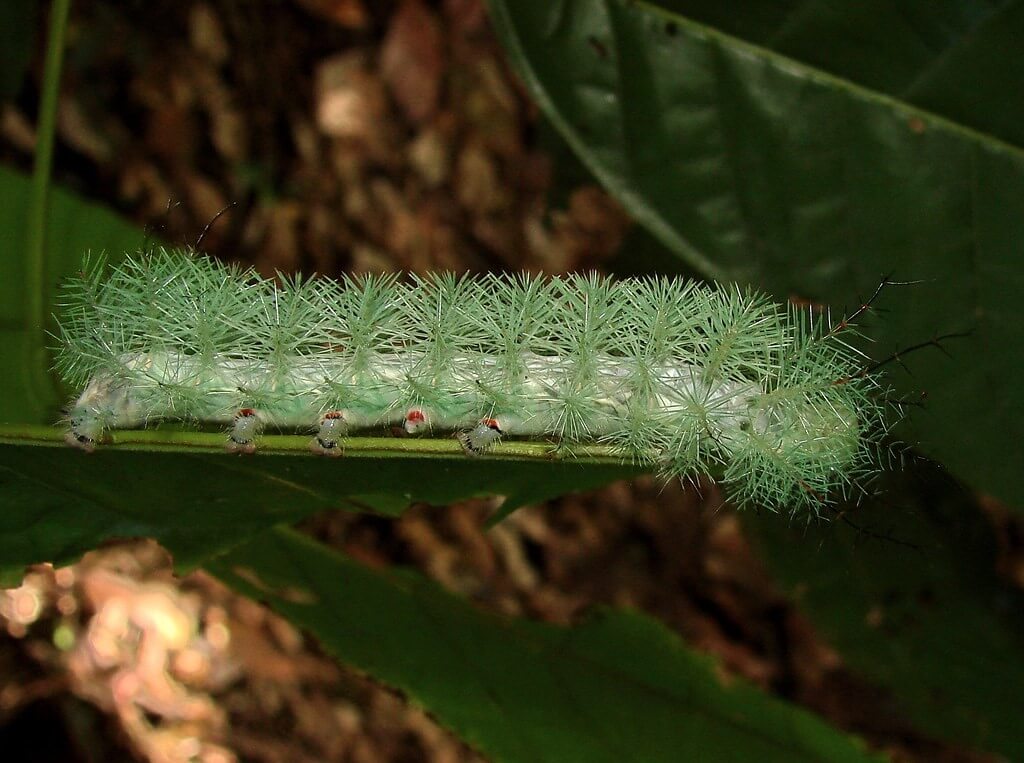
Giant Silkworm Moth Caterpillar, also called assassin caterpillars, are not the caterpillars you would want to touch, as they are scary and dangerous. The caterpillar has several spear-like bristles that penetrate the skin and inject venom, which leads to headache, fever, vomiting, and malaise. These symptoms lead to severe bleeding that may lead to acute renal failure or hemorrhages.
Identification: Spear-like bristles, injects venom.
14. Spotted Apatelodes Moth Caterpillar
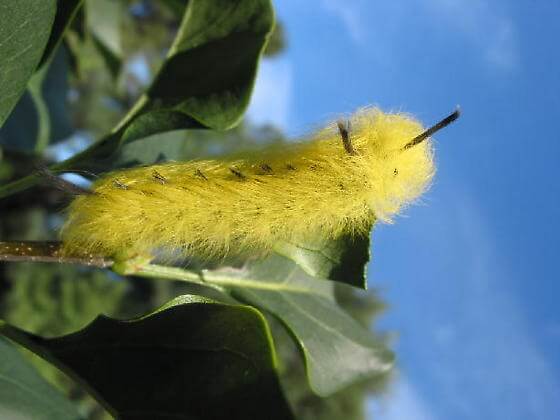
A visually striking caterpillar, the Spotted Apatelodes features a unique creamy yellow body adorned with black spots. Its hairs are silky and sparse, adding to its delicate appearance. These caterpillars are often found on oak, willow, and birch trees. As they mature, they become more colorful, turning into elegant moths.
Identification: Creamy yellow with black spots, silky hairs.
15. Cloudless Sulphur Caterpillar
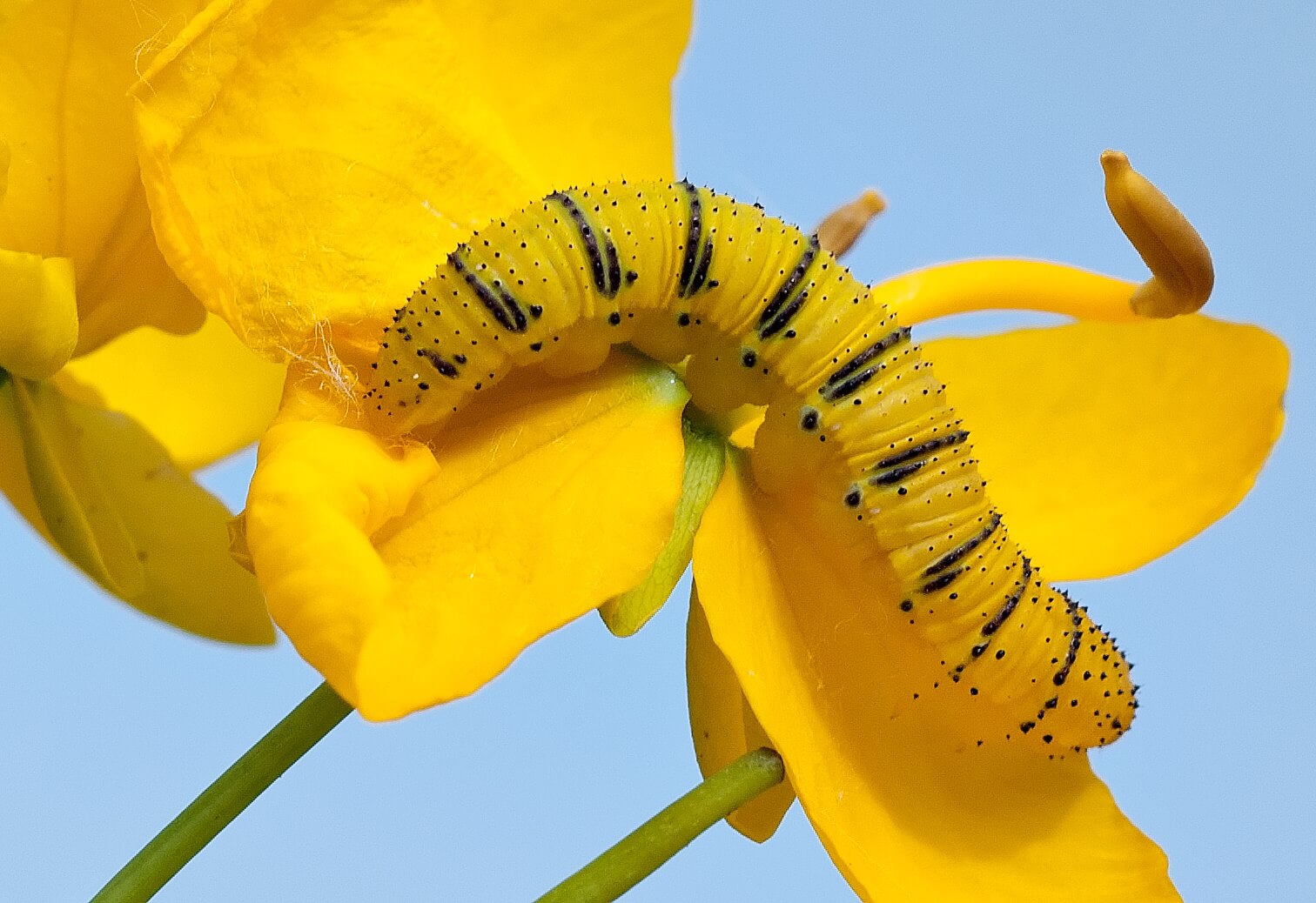
The Cloudless Sulphur Caterpillar is known for its vibrant green or yellow color, with small blue and pink markings. It feeds primarily on clover, peas, and other legumes. This caterpillar undergoes remarkable transformation, eventually emerging as a beautiful yellow butterfly.
Identification: Vibrant green or yellow with blue and pink markings.
16. Virginia Ctenucha Caterpillar
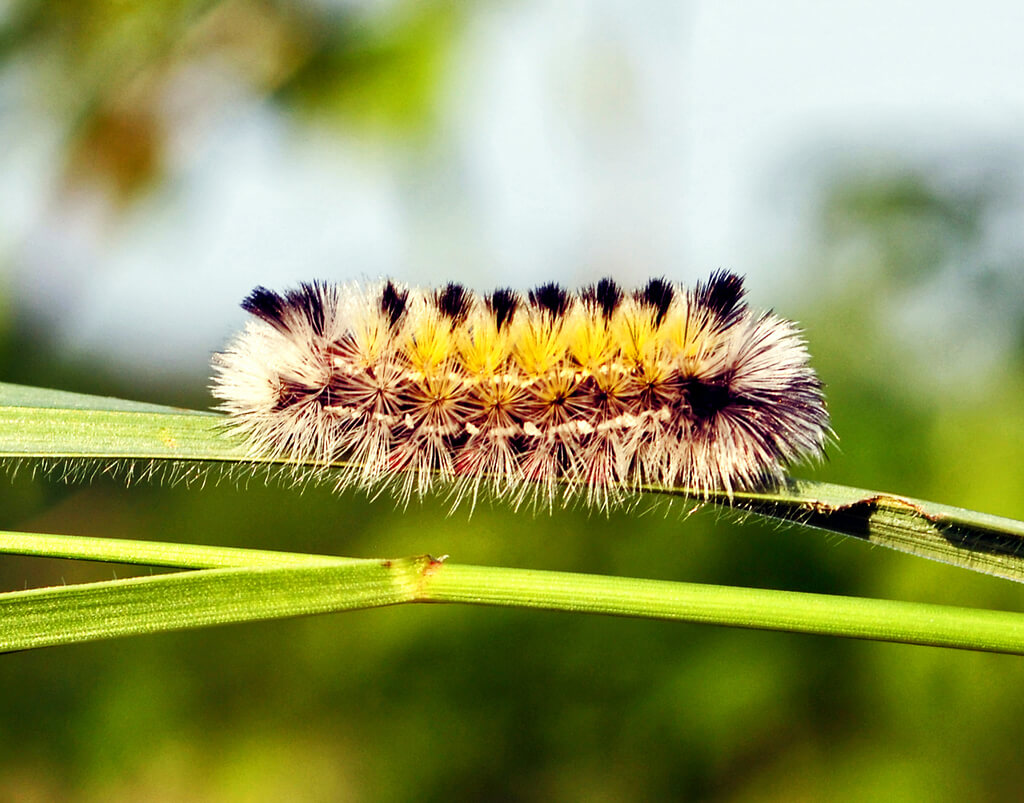
This species is easily recognized by its bright yellow body with thin, long black hairs. It’s often found on grasses and low plants. The Virginia Ctenucha Caterpillar transforms into a striking moth with dark blue wings and an orange head.
Identification: Bright yellow, thin black hairs.
17. Grapeleaf Skeletonizer Moth Caterpillar
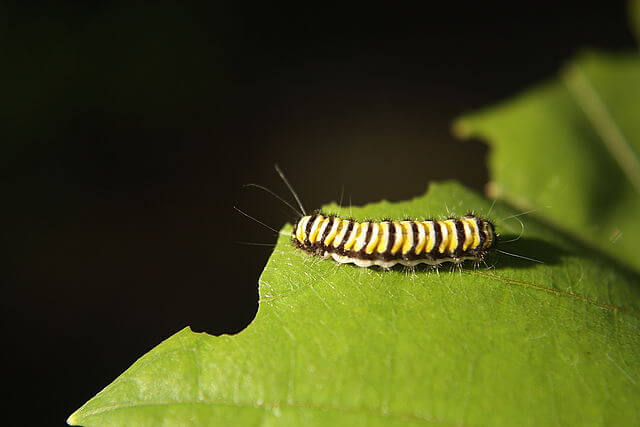
Distinct for its yellow body with two black stripes running longitudinally, this caterpillar is a common pest on grapevines. Their feeding habits create a ‘skeletonized’ appearance in leaves. The adult moth is characterized by its metallic blue-black color.
Identification: Yellow with two black stripes.
18. Western Grapeleaf Skeletonizer Moth Caterpillar
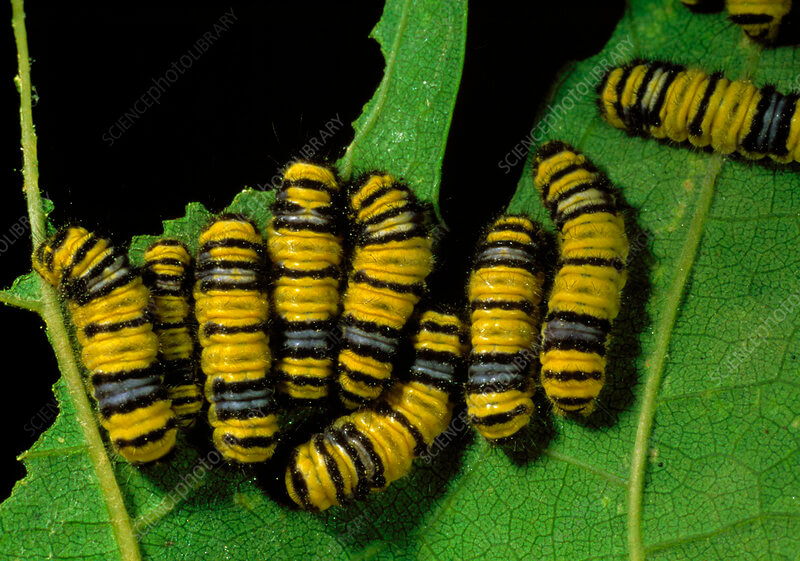
Similar to its relative, this caterpillar features yellow and black stripes. It’s particularly detrimental to vineyards. The Western Grapeleaf Skeletonizer has a slightly different adult form, with more pronounced yellow coloring on the wings.
Identification: Yellow and black stripes, vineyard pest.
19: Wood Leopard Moth Caterpillar
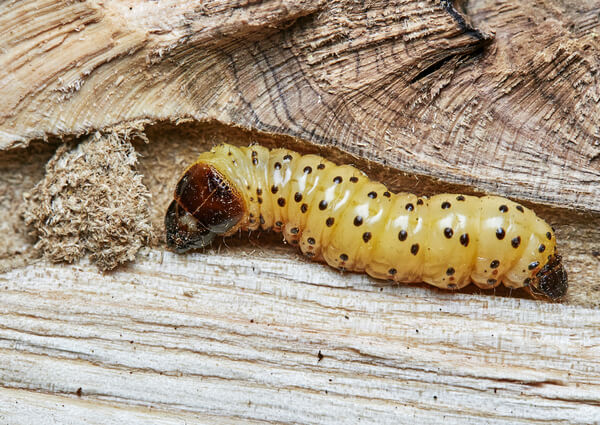
The Wood Leopard Moth Caterpillar is characterized by its bright yellow body with black and white spots, resembling leopard print. It feeds on a variety of deciduous trees and shrubs. This caterpillar is known for its striking transformation into a white moth with black spots.
Identification: Yellow with black and white spots.
20. Cottonwood Dagger Caterpillar
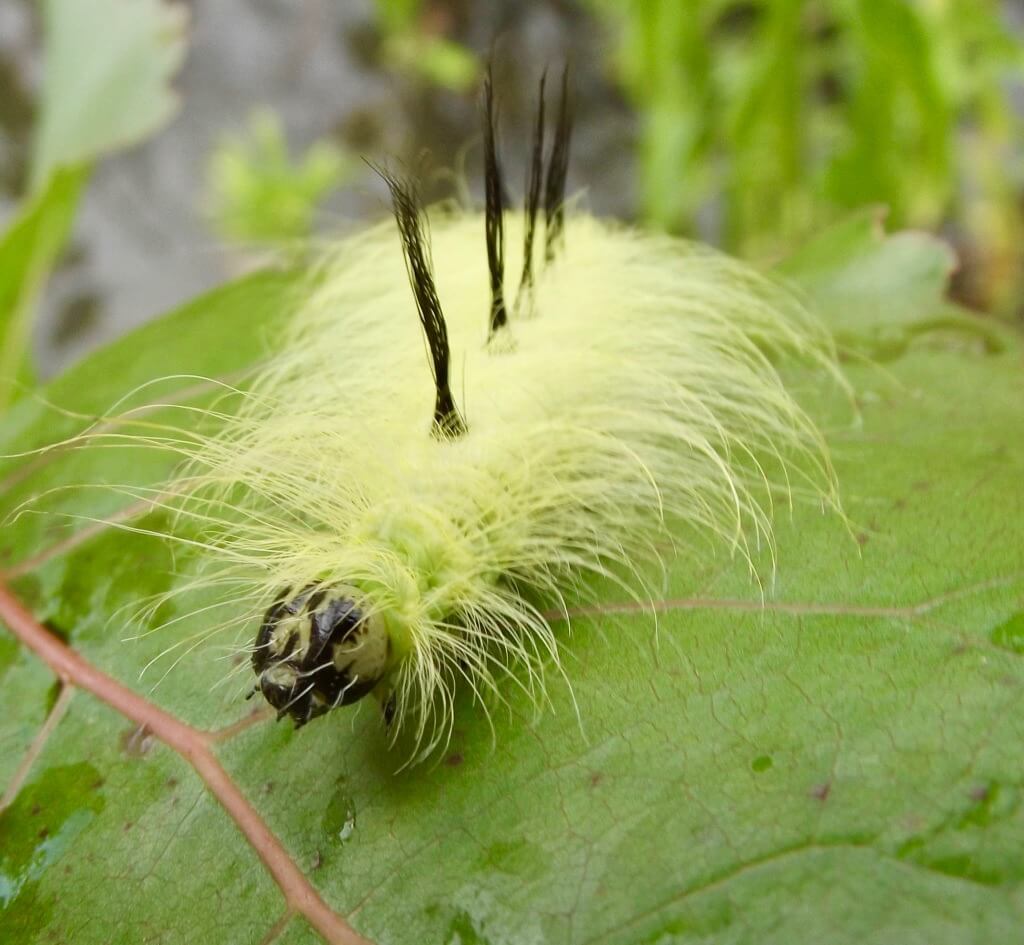
This caterpillar has a unique appearance with its yellow body and thin, spiky hairs. Found on cottonwood trees, it is known for its harmless nature despite its fierce look. The adult form of this caterpillar is a gray moth with subtle wing patterns.
Identification: Yellow body, thin spiky hairs.
21. Delightful Dagger Caterpillar
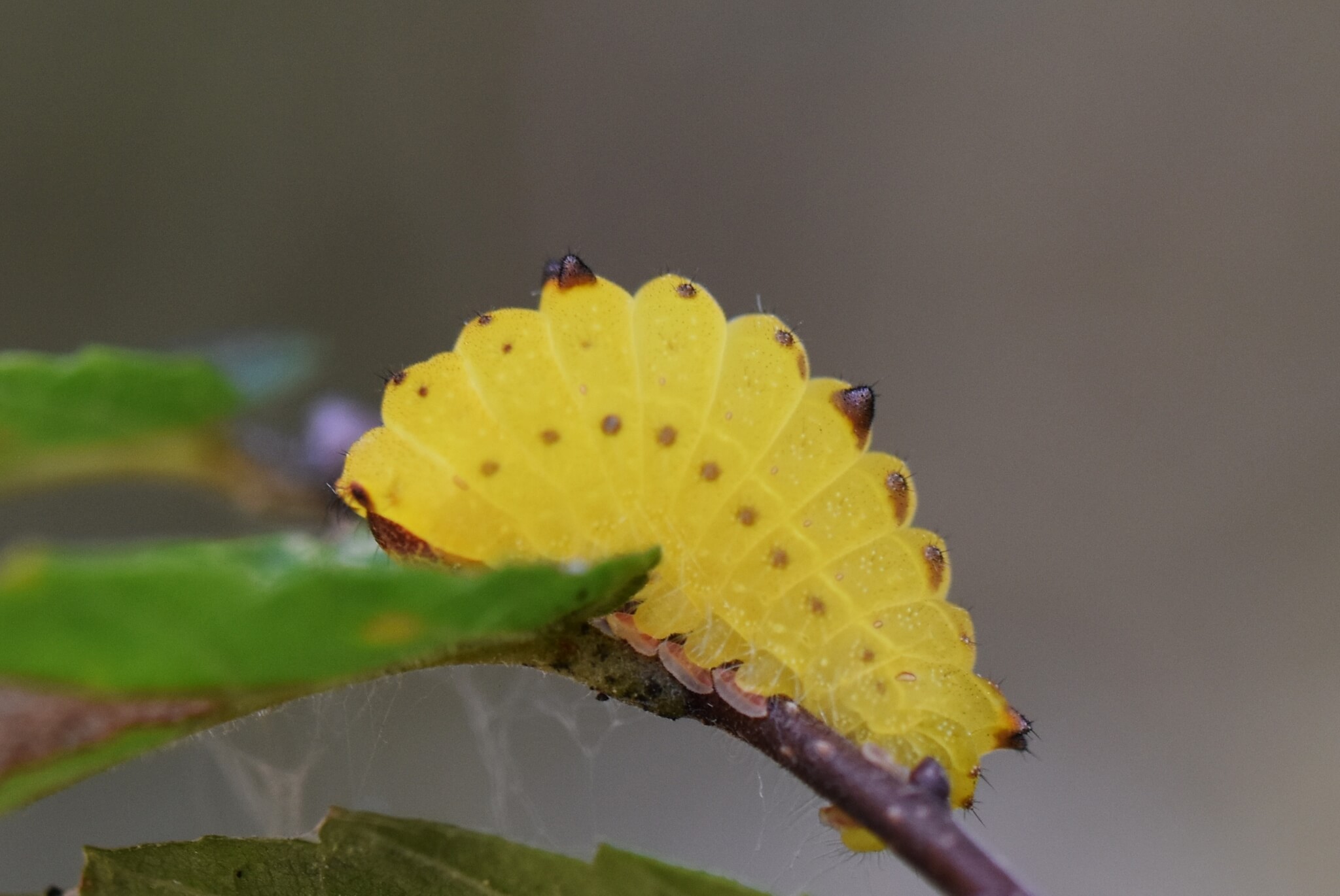
The Delightful Dagger Caterpillar stands out with its bright yellow color and hair tufts of varying lengths. It’s commonly found on a variety of trees and shrubs. The adult moth has a notable dagger-like pattern on its wings, hence the name.
Identification: Bright yellow, hair tufts of varying lengths.
22. Santa Ana Tussock Moth Caterpillar
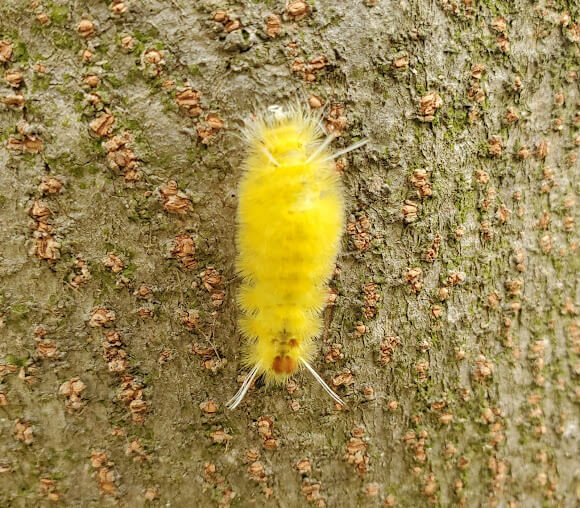
This caterpillar features a distinctive yellow body with long, black tufts of hair. It’s often seen on oak and walnut trees. The Santa Ana Tussock Moth Caterpillar transforms into a grayish-brown moth with a fuzzy appearance.
Identification: Yellow body, long black tufts.
23. Vine Sphinx Caterpillar
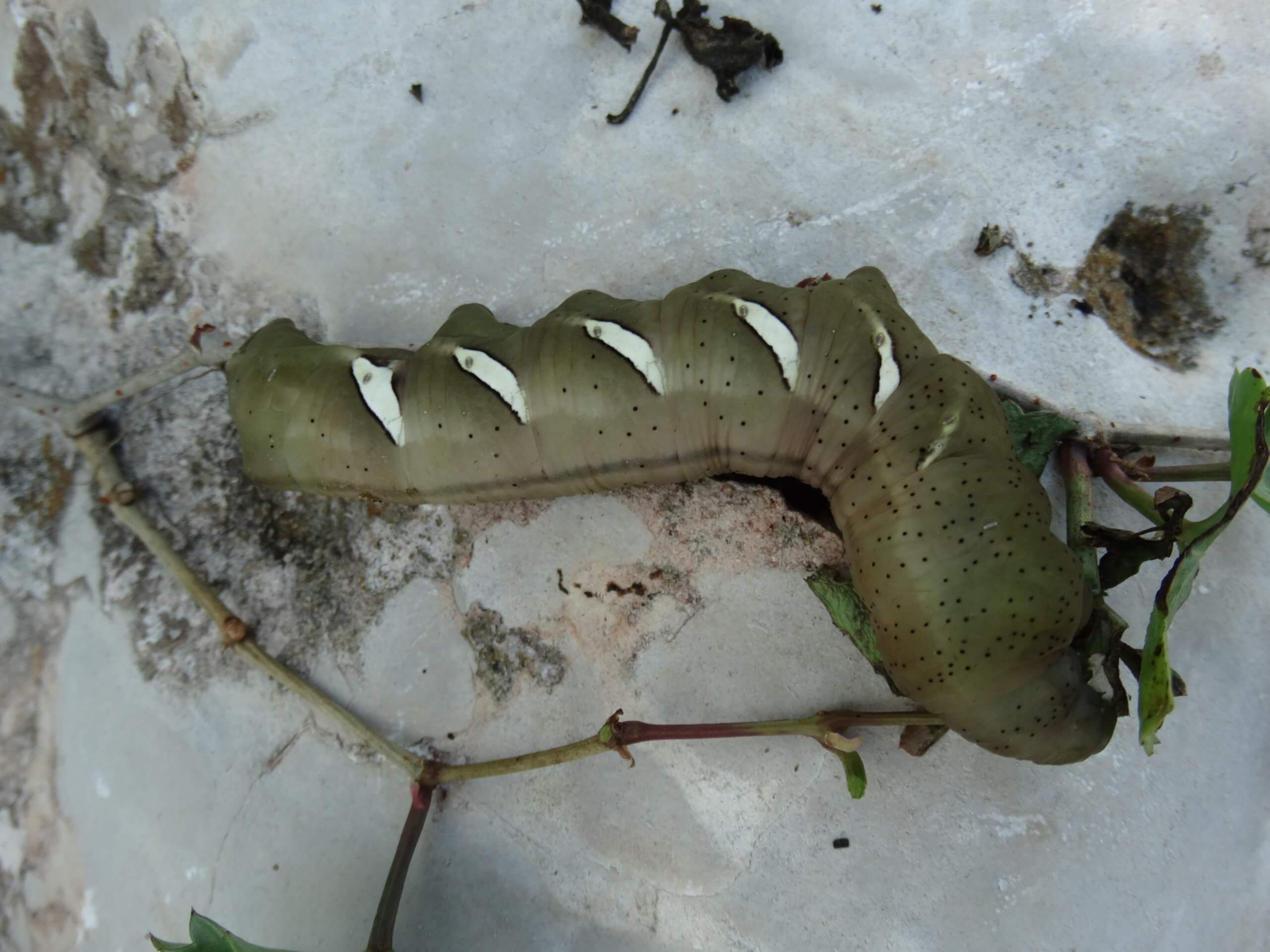
Known for its striking lime-green body with diagonal stripes, the Vine Sphinx Caterpillar is a sight to behold. It primarily feeds on grape and other vine leaves. The adult form is a large, robust moth with distinctive markings.
Identification: Lime-green with diagonal stripes.
24. Stinging Rose Caterpillar
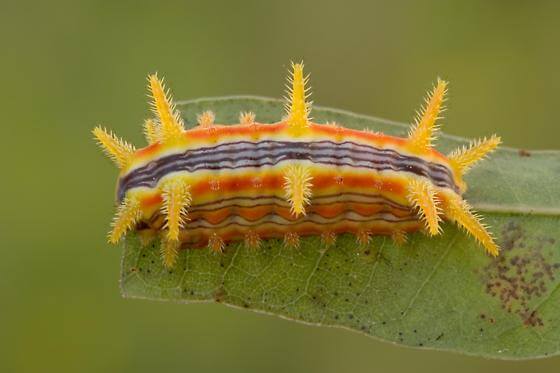
This caterpillar is notable for its vivid yellow, orange, and red colors, adorned with venomous spines. It primarily feeds on the leaves of various flowering plants. The Stinging Rose Caterpillar transforms into a Rose Moth, which features muted tones compared to its larval stage.
Identification: Vivid yellow, orange, red, venomous spines.
25. Io Moth Caterpillar
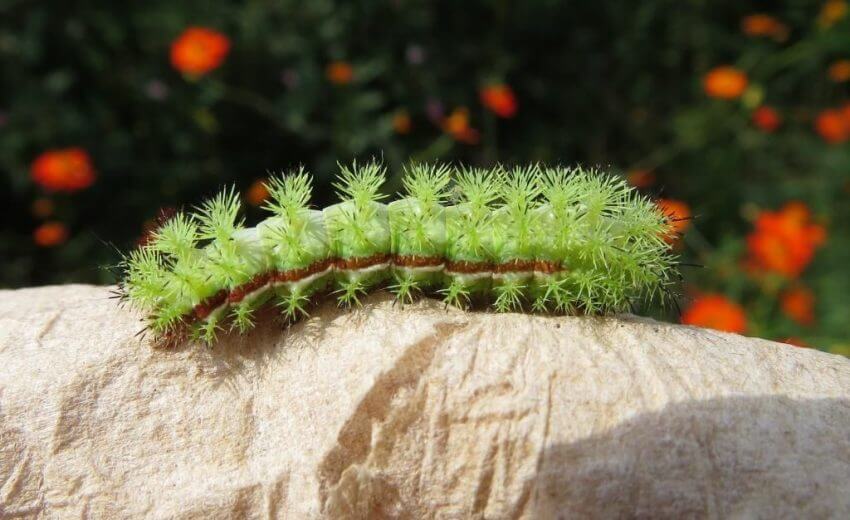
The Io Moth Caterpillar is striking, with a yellow body covered in greenish spines. These spines can cause irritation if touched. It’s found on a variety of plants, including corn and roses. The adult Io Moth is known for the eye-like spots on its wings.
Identification: Yellow body covered in greenish spines.
Conclusion
There you have it, a little peek into the vibrant world of yellow caterpillars!
These 25 critters are just a handful of the many out there, each with their own stories and roles in nature.
So the next time you’re out and about, take a moment to appreciate these small but mighty creatures.
What do you think about our list of 25 yellow caterpillars?
Did you find the identification guide helpful? Have you spotted any of these in your backyard?
Write in the comments what you think about it. I can’t wait to hear about your own caterpillar encounters! 🐛💛

